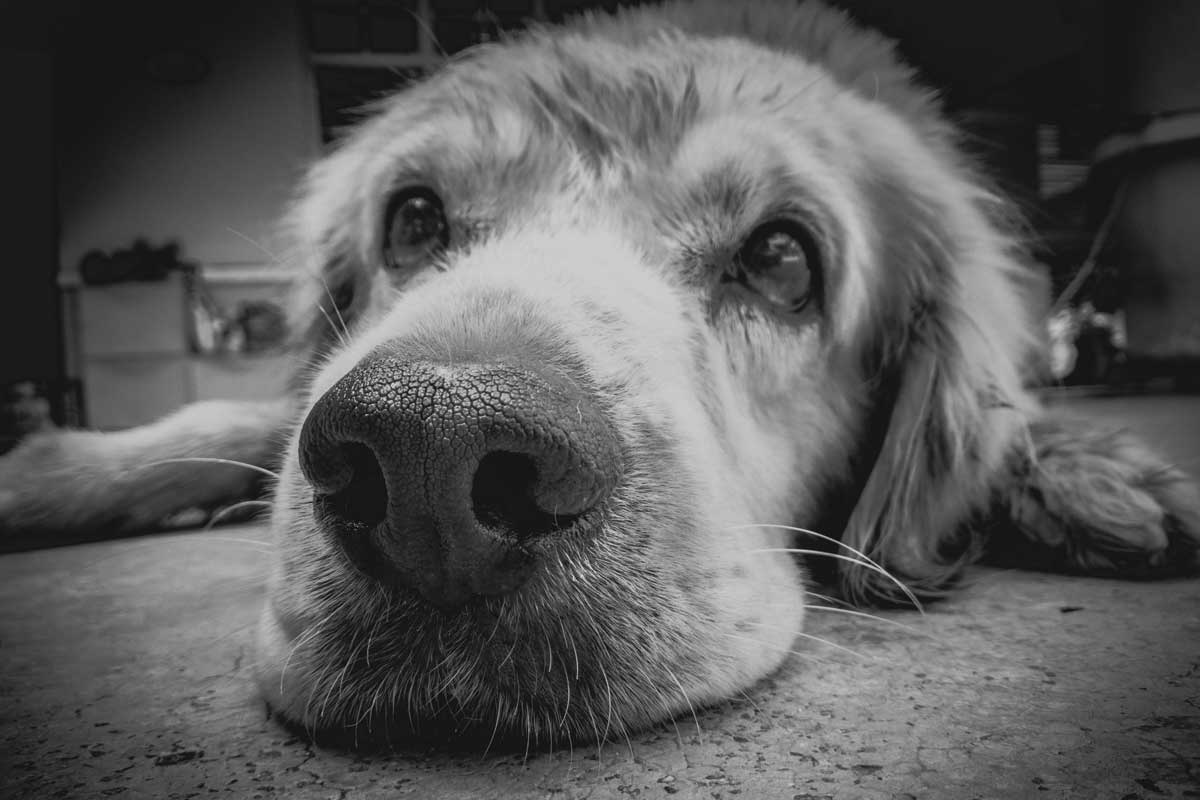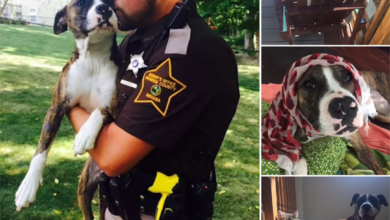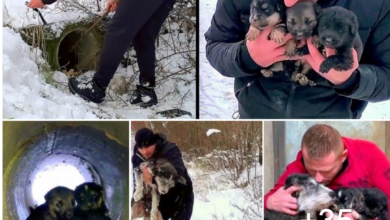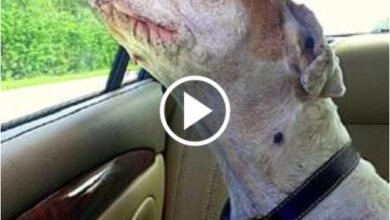Why Do Dogs Cry For No Reason?

Do you ever wonder why your dogs cry for no apparent reason? As pet owners, we often struggle to understand the communication methods of our dogs. They can’t speak our language, but they do have various ways of expressing themselves. Crying is one such method that may leave you puzzled and concerned about your dog’s well-being.
There could be several reasons behind your dog’s random crying episodes. Understanding these underlying causes can help you address the issue and provide proper care for your pooch. In this article, we will explore some common reasons why dogs cry for no reason and how to identify them. We’ll also discuss how to differentiate between normal whimpering and signs of discomfort or distress that requires immediate attention from a vet.
Understanding Your Dog’s Communication Methods
Understanding your dog’s communication methods is crucial if you want to decipher why they’re crying for no apparent reason. Dogs communicate in various ways, including through their body language and vocalizations. By paying close attention to these signals, you can learn a lot about your furry friend’s emotional state.
Canine body language is an essential tool for understanding what your dog is trying to tell you. For example, if they’re feeling anxious or stressed, they may exhibit signs such as panting, pacing, or shaking. On the other hand, if they’re feeling relaxed and content, they may wag their tail and lay down with their paws tucked under them.
Understanding vocalizations is also key in interpreting your dog’s cries. While dogs bark primarily to alert their owners of potential threats or danger, whining and whimpering are usually associated with discomfort or distress. Additionally, some dogs may make high-pitched noises when they’re excited or happy.
With an understanding of these communication methods in mind, it becomes easier to identify the reasons behind your dog’s crying behavior. In some cases, it may be due to separation anxiety – a common issue among dogs that feel distressed when left alone by their owners.
It’s important to note that there could be several reasons why a dog may cry without any apparent cause. By observing their behavior closely and recognizing the signs of distress, you can help address any underlying issues that might be causing them stress or discomfort.
Separation Anxiety
When you leave your furry friend alone, they might feel lonely and scared, leading to excessive whining and howling due to separation anxiety. As pack animals, dogs thrive on social interaction, and when left alone for extended periods, they can become anxious.
Separation anxiety is a common condition that affects dogs of all breeds and ages. It is characterized by behaviors such as destructive chewing or digging, house soiling, excessive barking or howling, and attempts at escaping.
Preventing separation anxiety involves training your dog from an early age to be comfortable with being alone for short periods. Gradually increase the time you spend away from home until your pup gets used to it. Provide plenty of mental stimulation through interactive toys or puzzle feeders to keep them busy while you’re gone. If possible, hire a dog walker or pet sitter to break up the long hours of solitude.
Treating separation anxiety requires patience and consistency. Start by desensitizing your dog to pre-departure cues such as picking up keys or putting on shoes. Teach them that these actions don’t always mean you’re leaving for good by practicing them without actually leaving the house. Additionally, counterconditioning techniques like giving treats or toys before leaving can help create positive associations with alone time. In severe cases, medication prescribed by a veterinarian may be necessary.
Transitioning into the subsequent section about boredom, it’s essential to note that boredom can also cause unwanted behaviors in dogs when left alone for extended periods. While similar in symptoms to separation anxiety, boredom stems from a lack of mental stimulation rather than fear of abandonment.
Providing plenty of exercise and mental stimulation through puzzles games or walks can help alleviate boredom-related issues in dogs left home alone.
Boredom

To prevent your furry friend from getting bored when left alone, make sure to provide them with plenty of mental stimulation through interactive toys and games. Dogs are social animals that require a lot of attention and interaction with their owners. When they’re left alone for extended periods, they can become restless and bored, leading to excessive crying or whining.
Games for entertainment and mental stimulation can help keep your dog occupied while you’re away. Simple games like hiding treats around the house or playing fetch can provide hours of entertainment for your pup. Interactive toys like puzzle feeders or chew toys also encourage mental stimulation and engagement.
Interactive toys for engagement are another great way to keep your dog mentally stimulated when you’re not around. Toys that dispense treats or have multiple parts that need to be manipulated can keep your dog entertained for hours on end. It’s important to rotate these toys regularly so that your dog doesn’t get bored with the same old thing every day.
With proper mental stimulation, you can ensure that your dog is happy and content even when you’re not around. However, if despite all these efforts, your furry friend still seems to cry out of nowhere, it might be an indication of pain or discomfort which needs immediate attention by a veterinarian.
Pain or Discomfort
If your dog is crying or whimpering for no apparent reason, it could be a sign of pain or discomfort. Some common causes include dental issues, arthritis, and injuries.
If you suspect your dog is in pain, it’s important to take them to the vet for evaluation and appropriate care. Your vet can help identify the cause of the pain and provide treatment options to keep your furry friend comfortable.
Signs of Pain
You may notice your pup’s pained expression and pitiful whimpers as signs of discomfort. As a pet owner, it’s important to recognize these cues and take action to alleviate their pain.
Here are some common signs of pain that you should watch out for:
- Lethargy or decreased activity
- Loss of appetite
- Increased vocalization (whining, crying, barking)
If you notice any of these behavioral changes in your dog, it’s important to consult with a veterinarian. They can assess the root cause of the discomfort and recommend ways to alleviate their pain.
Moving on to the subsequent section about ‘common causes’, there are several reasons why dogs cry for no reason. Understanding these causes can lead to effective treatment and management strategies for your furry friend.
Common Causes
Discovering the root causes of your pup’s tearful outbursts can be crucial in providing appropriate care. There are several potential reasons for crying, including separation anxiety, changes in routine or environment, and medical issues.
One possible reason for crying is separation anxiety, which is common among pets left alone for extended periods. Other emotional stressors can trigger this behavior, such as moving to a new home or losing a family member.
Medical issues like dental problems or ear infections can also cause discomfort and lead to crying fits. If you suspect an underlying health condition, seek veterinary care for an accurate diagnosis and treatment plan.
It’s important to address the root cause of your dog’s tears to provide them with the care and attention they need to be happy and healthy.
Veterinary Care
When it comes to taking care of your furry friend, it’s important to schedule regular veterinary check-ups. Preventive measures are key in maintaining their overall health and well-being.
Regular checkups can detect any underlying medical conditions that may be causing your dog to cry for no reason. A licensed veterinarian will conduct a thorough physical examination and run necessary tests to determine if there are any issues with your pet’s health.
In addition to detecting medical concerns, regular checkups also allow for opportunities to discuss behavioral changes with the vet. If your dog is crying due to fear or anxiety, a vet can help identify triggers and provide guidance on how to manage these emotions.
By working closely with a veterinarian and addressing any potential issues early on, you can ensure that your furry friend leads a happy, healthy life.
Fear or Anxiety
When your dog displays aggressive behavior, it may be a sign of fear or anxiety. Dogs that are fearful of loud noises, such as thunderstorms or fireworks, may also exhibit anxious behaviors like trembling and hiding.
Proper training and socialization can help alleviate these fears and anxieties, allowing your furry companion to feel more comfortable in their environment.
Aggressive Behavior
Sometimes, dogs may act aggressively and cry without any apparent reason. This behavior can be attributed to dominance theory, which suggests that some dogs may feel the need to assert their dominance over their surroundings. Additionally, breed-specific behavior can also play a role in aggressive crying. For example, certain breeds like Pit Bulls or Rottweilers are known for being protective of their owners and may exhibit this behavior as a way of guarding them.
It’s important to address aggressive crying in dogs as it can lead to dangerous situations for both the dog and those around them. Oftentimes, seeking the help of a professional dog trainer or behaviorist can be beneficial in addressing these issues.
The next subtopic explores another reason why dogs may cry without any apparent reason: fear of loud noises.
Fear of Loud Noises
The fear of loud noises can cause dogs to whimper and become anxious, leading to potentially harmful behavior. This is a common phobia among many dogs and is often seen during thunderstorms or fireworks displays. Dogs with this phobia may display signs of distress such as shaking, panting, pacing, and even destructive behavior.
To manage this phobia in your dog, desensitization training can be effective. This involves exposing your dog to the sound that triggers their fear at a low volume and gradually increasing it over time until they’re no longer afraid of it. This process should be done under the guidance of a professional trainer to ensure that it’s done safely and effectively.
By successfully managing your dog’s fear of loud noises through desensitization training, you’ll not only improve their quality of life but also prevent potentially harmful behaviors from occurring. This lays the foundation for successful training and socialization in the future.
Training and Socialization
If your dog cries for no apparent reason, it may be due to lack of training and socialization. Dogs are intelligent creatures that need mental stimulation and physical exercise to keep them happy and healthy. Interactive toys can help provide entertainment for your pet while you’re away or busy with other things.
Regular exercise is also important as it helps reduce stress levels in dogs, which can lead to excessive crying. Taking your dog for walks or runs is a great way to get them moving and burn off excess energy. Additionally, socializing methods such as puppy classes can help teach your furry friend how to interact with others in a positive manner.
These classes also provide an opportunity for both you and your pet to meet new people and make friends. Proper training and socialization can greatly improve the emotional well-being of your dog. Interactive toys can provide mental stimulation when you’re too busy to play. Exercise is necessary for reducing stress levels in dogs.
Puppy classes offer an excellent opportunity for socializing both pets and their owners. By providing your pet with proper training, interactive toys, regular exercise, and socializing opportunities, you’ll create a happier environment for both you and your furry friend. This will ultimately result in less crying from boredom or anxiety-related issues, allowing you both to enjoy quality time together without unnecessary interruptions caused by excessive crying behavior.
Next up, we’ll discuss attention-seeking behavior in dogs, another possible reason why they cry out seemingly without reason!
Attention-Seeking Behavior
If your dog is constantly seeking attention, there are a few ways you can address this behavior. Positive reinforcement is key to encouraging desirable behavior, such as sitting calmly or lying down.
You can also choose to ignore the attention-seeking behavior entirely, which may discourage it over time. Consistent training and setting boundaries can also help establish a routine for your dog and reduce their need for constant attention.
Positive Reinforcement
Using positive reinforcement, you can train your dog to stop crying for no reason. Positive reinforcement is a behavioral modification technique that rewards desired behaviors with treats, praise, or attention.
When your dog stops crying for no reason, immediately give them a treat or praise them. Over time, they will associate not crying with receiving rewards and will be more likely to repeat the behavior.
It’s important to note that positive reinforcement should never involve punishment or physical harm to your dog. Instead, focus on rewarding good behavior and ignoring bad behavior.
If your dog continues to cry for no reason despite positive reinforcement techniques, it may be time to move onto the next step: ignoring the behavior altogether.
Ignore the Behavior
To stop your pup’s crying, simply ignore the behavior altogether. This may seem counterintuitive, but by giving attention to a dog’s crying, you’re reinforcing the behavior and encouraging them to continue. Instead, try these training techniques for behavioral modification:
- Distract your dog with a toy or treat: When your dog starts crying, redirect their attention by offering them a toy or treat. This will not only distract them from their crying but also reinforce positive behavior.
- Reward quiet behavior: Once your dog stops crying and becomes quiet, immediately reward them with praise and treats. This will encourage them to remain calm in the future.
- Consistency: It’s important to be consistent with this training technique and not give in to your dog’s cries even once. Dogs thrive on routine and consistency.
- Seek professional help: If your dog’s crying persists despite these efforts, consider seeking help from a professional trainer who can provide additional guidance on how to modify this behavior.
By using these training techniques for behavioral modification, you can effectively stop your pup’s constant crying and create a more peaceful living environment for both you and your furry friend.
In order to further improve their behavior, it’s essential to incorporate proper training into their routine as well.
Training
Ready to transform your pup’s behavior and create a stronger bond? Let’s dive into the world of training!
One effective way to address your dog’s crying is through interactive games. These games can help stimulate their minds, provide an outlet for energy, and strengthen the bond between you and your furry friend. Positive reinforcement techniques can be used during these games to encourage good behavior and discourage bad habits.
For example, if your dog starts crying during playtime, try redirecting their attention to a toy or treat when they stop crying. Reward them with praise or treats when they successfully engage in the game without crying. With consistent practice, your dog will learn that playing without crying yields positive results!
Now that we’ve explored training methods for correcting excessive crying in dogs, let’s take a look at potential medical conditions that may contribute to this behavior.
Medical Conditions
If your dog is crying excessively or displaying unusual behavior, it may be a sign of a medical condition. Common medical conditions that can cause these symptoms include arthritis, dental problems, and gastrointestinal issues.
Treatment options for these conditions will depend on the specific diagnosis and severity of the condition, but veterinary care is essential to properly diagnose and treat any underlying medical issues your dog may be experiencing.
Common Medical Conditions
You might be wondering why your furry friend is crying for no apparent reason, and one possible explanation could be a common medical condition.
Some of the most frequent conditions that can cause dogs to cry include allergies, ear infections, and dental problems. Prevention methods and lifestyle changes can help alleviate these conditions.
Regular grooming, especially during seasonal changes or allergy seasons, can reduce the occurrence of skin allergies in dogs. Keeping your dog’s ears clean and dry after swimming or bathing can prevent ear infections. Lastly, maintaining good oral hygiene by regularly brushing their teeth and providing dental chews can reduce the risk of dental problems in dogs.
By incorporating these preventive measures into your dog’s daily routine, you may be able to minimize the chances of them experiencing discomfort that leads to crying. Now that we have discussed some prevention methods for common medical conditions that cause dogs to cry without reason, let’s explore some treatment options that are available to provide relief when they do occur.
Treatment Options
When your furry friend is experiencing discomfort due to a medical condition, there are various treatment options available to alleviate their pain and reduce the need for crying.
One option is alternative therapies such as acupuncture or massage therapy, which can provide pain relief and promote relaxation.
Another option is natural remedies like CBD oil or herbal supplements that can help reduce inflammation and improve joint mobility.
It’s important to note that these treatment options should always be discussed with your veterinarian before implementing them, as they may interact with other medications or exacerbate certain conditions.
If alternative therapies and natural remedies do not provide sufficient relief, veterinary care may be necessary to diagnose and treat underlying medical issues causing your dog’s crying.
Veterinary Care
Now, it’s time to dive into the importance of seeking veterinary care for your furry friend in order to address any underlying medical issues causing their discomfort and crying.
Dogs may cry for no apparent reason, but there could be an underlying medical issue that needs immediate attention. Some preventive measures include regular visits to the vet, routine checkups, and timely vaccinations to prevent diseases that could cause pain and discomfort.
Ignoring these issues could lead to catastrophic consequences as some conditions can worsen over time if left untreated. For instance, a dog suffering from arthritis may cry due to joint pain which can eventually lead to mobility issues and even paralysis if not addressed promptly.
Seeking veterinary care is crucial as it helps identify the root cause of your dog’s crying and provides cost-effective solutions tailored specifically for them. So, don’t procrastinate on your furry friend’s health – get them checked regularly!
Conclusion
In conclusion, understanding why your dog cries for no reason requires a deeper understanding of their communication methods. Separation anxiety, boredom, pain or discomfort, fear or anxiety, attention-seeking behavior, and medical conditions are all potential reasons behind your furry companion’s vocalizations.
While it may be tempting to dismiss your dog’s crying as simply whimpering for attention, it’s important to consider the possibility that they may be experiencing physical or emotional distress. By taking the time to understand your dog’s unique needs and behaviors, you can better address any underlying issues and provide them with the care they deserve.
Remember: dogs are not just pets; they’re loyal companions who rely on us for love and support. So next time you hear your pup crying without an apparent reason, take a moment to assess their situation and show them some extra TLC. After all, a happy dog makes for an even happier household!
Read more:


















































